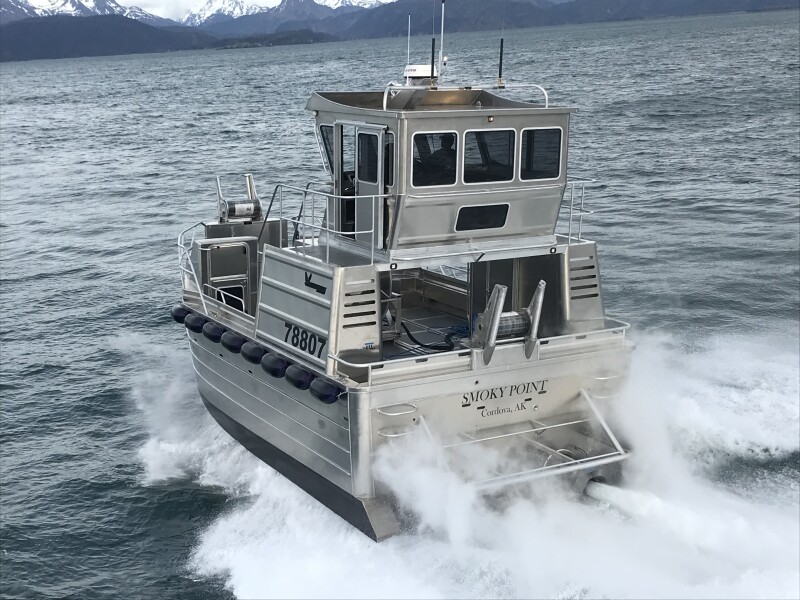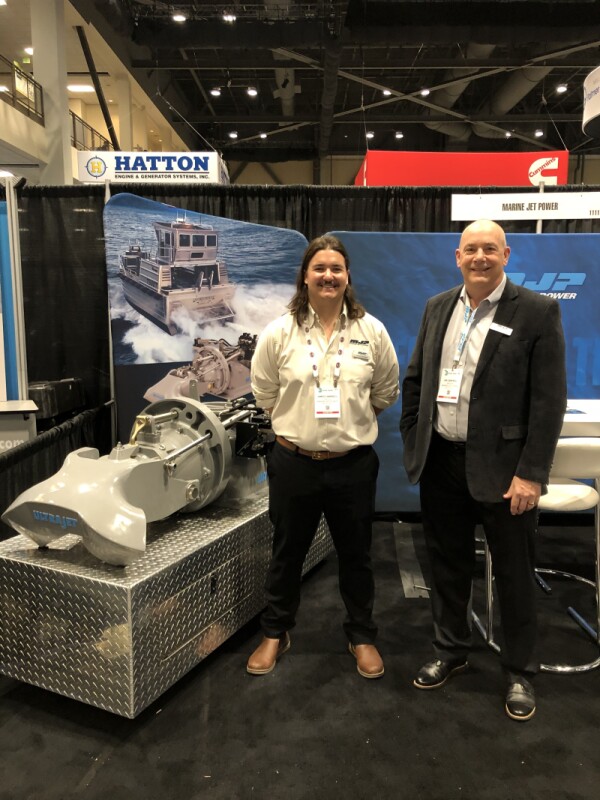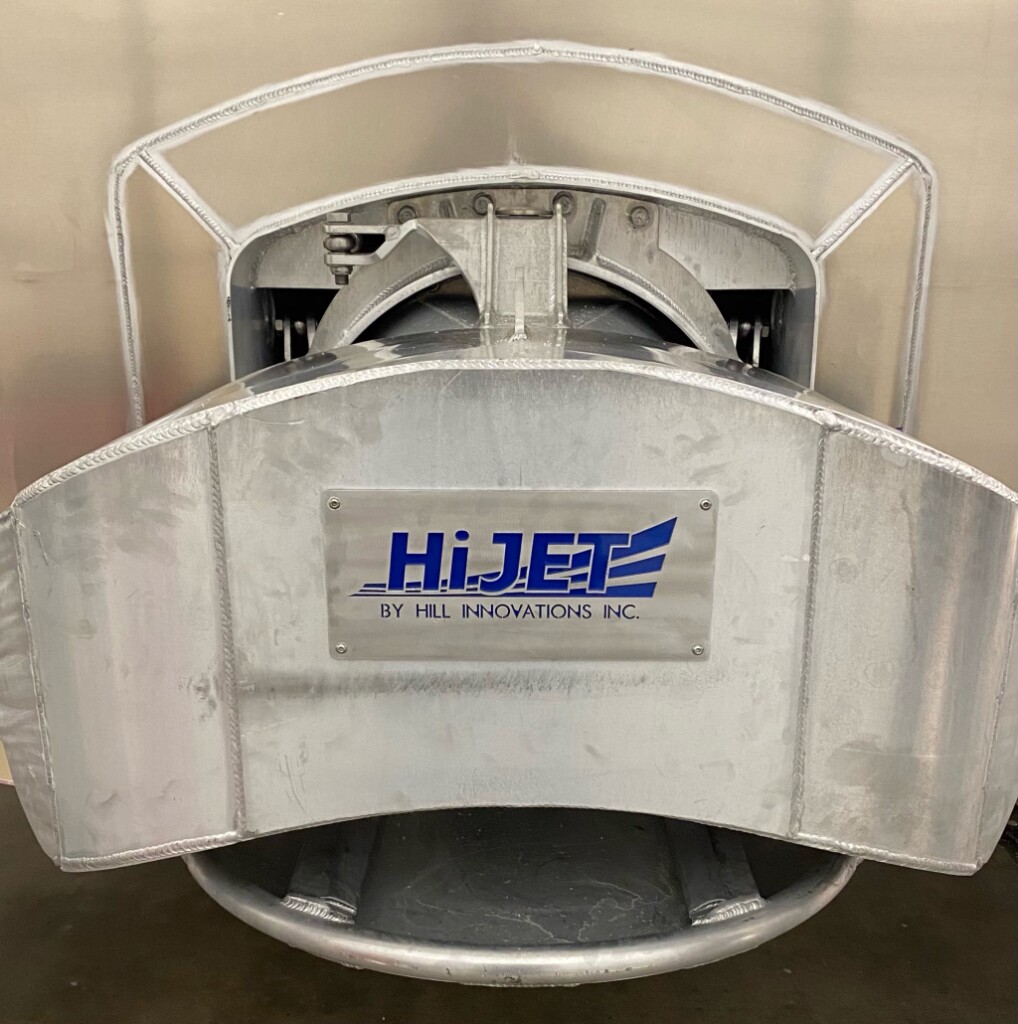As salmon runs increase in size, Bristol Bay boats need more thrust to move fish fast
Torsten Schmitt, owner of the newly formed company Marine Propulsion West, has worked for a number of water jet manufacturers and offers a no-nonsense assessment of what the Bristol Bay market is looking for, thrust — the power to get on step with 10,000 or more pounds of salmon onboard.
“We have a customer with the Alamarin Omega 42 jet,” says Schmitt. “He is very happy with it, but we need to do more tests to make sure that it can do what we say it can do.” In the tests, Schmitt explains, the fish hold of the boat is loaded with barrels of water and then run to see at what speed and how long it takes to get on step.
While Schmitt is promoting his brand, Alamarin, he remains realistic about what the market is looking for and who is delivering it.

“Right now Hill Jet has the best jet on the market,” he says, noting that MJP’s Ultrajet can also get loaded boats up and on plane. Quality has become everything in the world’s largest salmon fishery, where fishermen want to get their product to tenders or canneries as soon as possible, and they need thrust to do that.
The Hill jets were designed and engineered by Leonard Hill, whose son Jason Hill is now president of the company, Hill Innovations. The Hills were having the Texas-based company Thrustmaster manufacture their jets, but are now building them in Arkansas.
“The Hi500 that we built with Thrustmaster had a 20-inch impeller,” says Jason Hill. “After that, we wanted more thrust, and dad designed the Hi600. That’s got a 24-inch impeller.” According to Hill, the Hi600 got heavily loaded boats on plane at around 18 knots, but for the space-constrained Bristol Bay boats, Hill’s father designed a new 20-inch jet, the Hi502.
“And we just came out with the Hi400,” says Hill. “That’s a 17-inch. We’re putting a pair in a boat for next season.”
Hill points out that as more boats move to twin configurations, two Hi400s can deliver all the thrust needed to get a loaded boat up on plane at around 18 knots.
Hill explains Hill Innovations has always focused on thrust. “We started with a tractor jet, but now we’re somewhere between that and a high-speed jet,” he says. “A water jet is a water pump, and you have three things you have to balance: boat speed, gallons of fuel burned per minute, and thrust. We’ve given up a little speed on the upper end so that we can have more thrust.” Hill notes that the impellers on the Hill jets are thicker and seldom need replacing. “It’s a lower-speed jet than Hamilton or Ultrajet,” he says. “So the tolerances do not have to be so close. We have a 500 out there that’s been used for five seasons and never replaced the impeller.”
According to MJP, the Ultrajet 340 High Thrust is a derivative of the UltraJet 340 — which has been in service worldwide for 10 years.
“As the runs in Bristol Bay get bigger, there’s a need for more thrust,” says Jim Campbell, president of MJP. The 340HT has the same major installation dimensions and can be installed into a similar space envelope. Incorporating an efficient and robust axial flow pump, reverse and steering controls, it has many of the same design features as the 340. To achieve superior thrust, design improvements have been made to the intake and impeller of the UJ340HT.
“We shortened up the intake, and increased the size of the impeller,” says Campbell, noting that it all comes back to the intake design to fit a high-thrust jet in a small boat.

“We’ve given up a little speed on the top end,” says Campbell. “But when fishermen have a load on, the HT series offers more thrust in that mid-range to be able to get that boat up on plane. Over the last five years we’ve paired them with twin installations of the Cummins QSB and the 6.7 liter FTP engines, among others,” says Campbell. “Loaded, they get up on plane at around 18 knots, and can cruise in the mid 20s. We have a lot of happy customers in the bay.”







